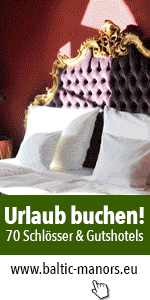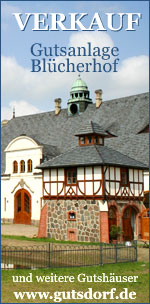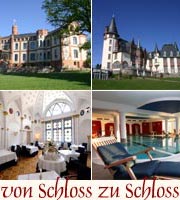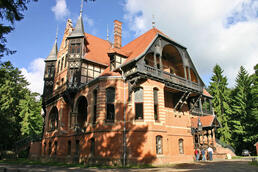Deutsche Website
Book "Manor houses and castles in Mecklenburg"
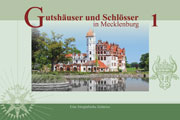
In Volume 1, we present 49 estates on 156 pages with short texts and more than 220 historical and current photographs.
Hunting Lodge Gelbensande
Picturesquely situated in a wooded area of heathland near Rostock, Jagdschloss Gelbensande was once the summer residence of Duke Friedrich Franz III of Mecklenburg (1851 - 1897) and his wife Anastasia Michailovna Romanova (1860 - 1922).
It was designed by Gotthilf Ludwig Möckel (1838 - 1915). Anastasia, who was the granddaughter of the Russian Tsar and thus Grand Duchess of Russia, desired a house that was for recreation only, without the formal character of a ducal residence. The foundations were laid on 1st May, 1885, the "topping-out" ceremony (erection of the roof trusses) took place just five months later, and by 1886 the builders had finished the outside of the building. The interior was completed in 1887. The Jagdschloss (hunting lodge) is a villa-like structure with a complicated arrangement of rooms, an irregular ground plan and a high semi-basement. It is made of red and yellow brick, possesses some neo-Gothic features reminiscent of English country-house style, and some decorative elements reminiscent of Russian palaces and boyar houses. In accordance with the Romantic tastes of the time, the building is relatively ornate, featuring turrets, oriel windows, dormer windows and a number of balconies. The first floor harbours the entrances to the building, windows of different shapes and a series of gallery terraces. The brickwork is formed of alternating red and yellow bricks. The second floor has an ornamental half-timbered facade with brick backing and features various decorative pediments and loggias. Tudor-style attics complete the building. Some of the furniture used in the interior came from the palace at Dargun, which was cleared out in 1884.
Inside the house, many of the original details have been preserved, including stained glass windows, fireplaces, panelled and raftered ceilings, wall panelling, lavatories and a bathroom with a royal bathtub. The double-headed eagle, symbol of the Russian Empire, can also be found in various places. Other features include an early central heating system which was extremely modern for its day, consisting of three furnaces in the basement and one on the first floor which were able to heat the whole of the piano nobile using hot air.
In 1904, Crown Princess Cecilie (1886 - 1954) became engaged while at Gelbensande to the Prussian Crown Prince Friedrich Wilhelm (1882 - 1951). The Cecilienhof palace in Potsdam, which was built between 1913 and 1917 was, at Cecilie's request, modelled on the house at Gelbensande. After the First World War and following a settlement between the state and its deposed nobility, the lodge was returned to Grand Duke Friedrich Franz IV and remained in the family until 1944.
It is claimed but not proven that the building was used under the Nazis as a central archive and place of negotiation between SS leader Heinrich Himmler and the Grand Admiral and later head of state Karl Dönitz.
Immediately after the end of the Second World War, Jagdschloss Gelbensande housed a military hospital. The little cemetery situated not far from the building dates from this time. Later, the house was used until 1979 as a clinic for tuberculosis patients, and then as a community library and veterans' club. In 1994, the building was acquired by the council and began to be used, among other things, for cultural events organised by an association of friends and supporters ("Förderverein Jagdschloss Gelbensande e. V.").
On 17th September 2008, Jagdschloss Gelbensande was sold to the developer Dirk Elgert, who has attempted to return the focus to the house's origins, re-invoking the spirit of the days of Grand Duke Friedrich Franz III. The building is being restored accordingly, and selected cultural events are held.

